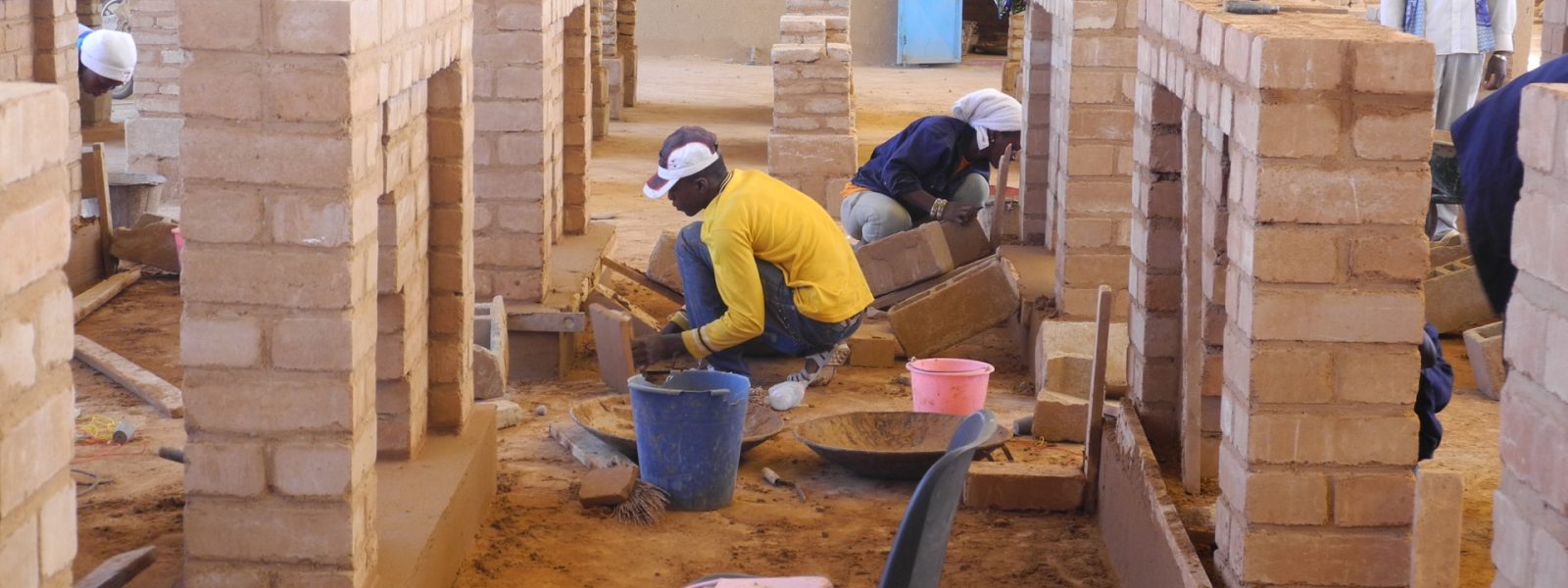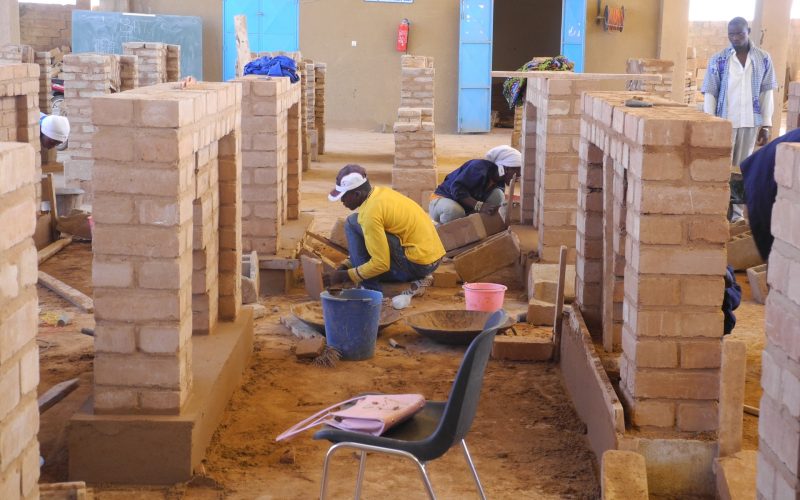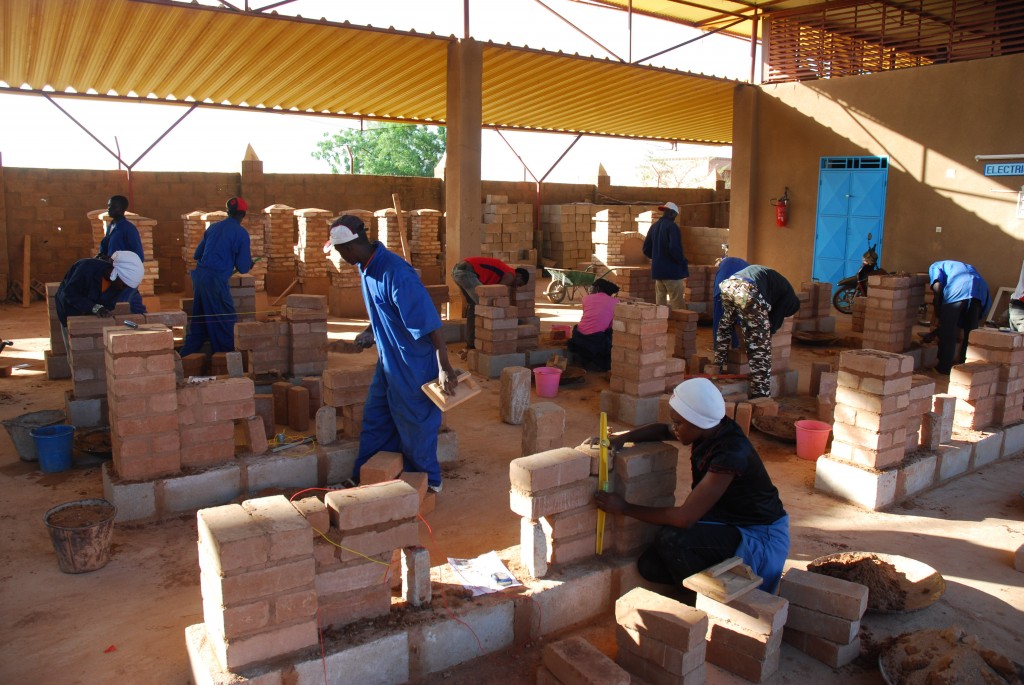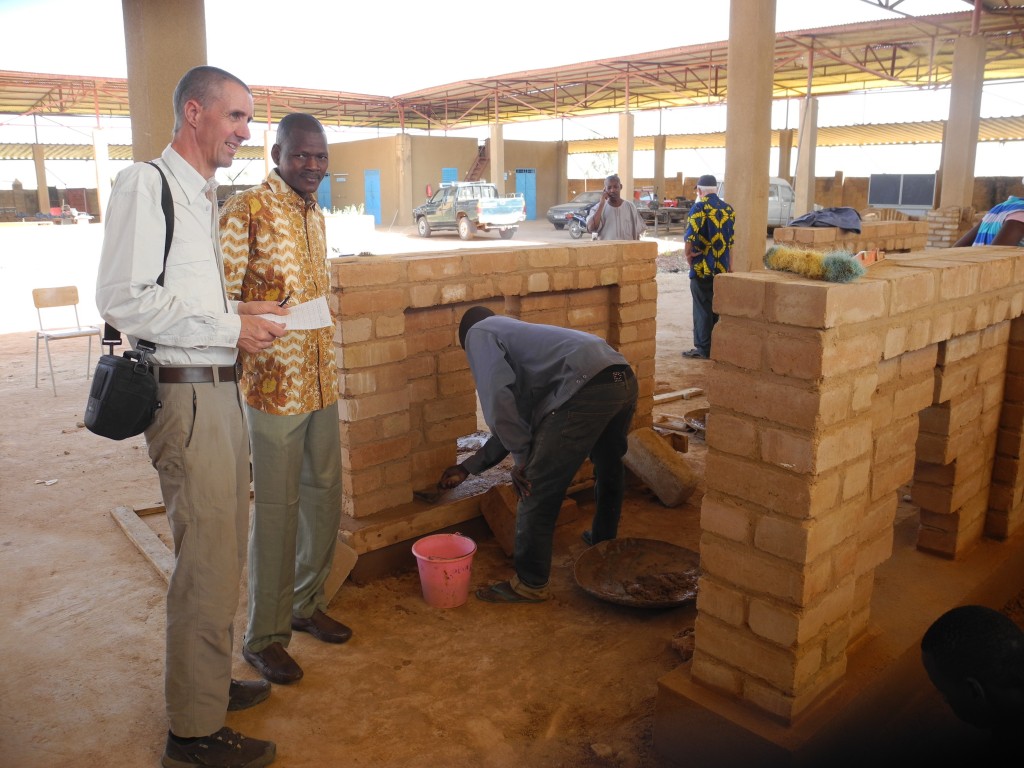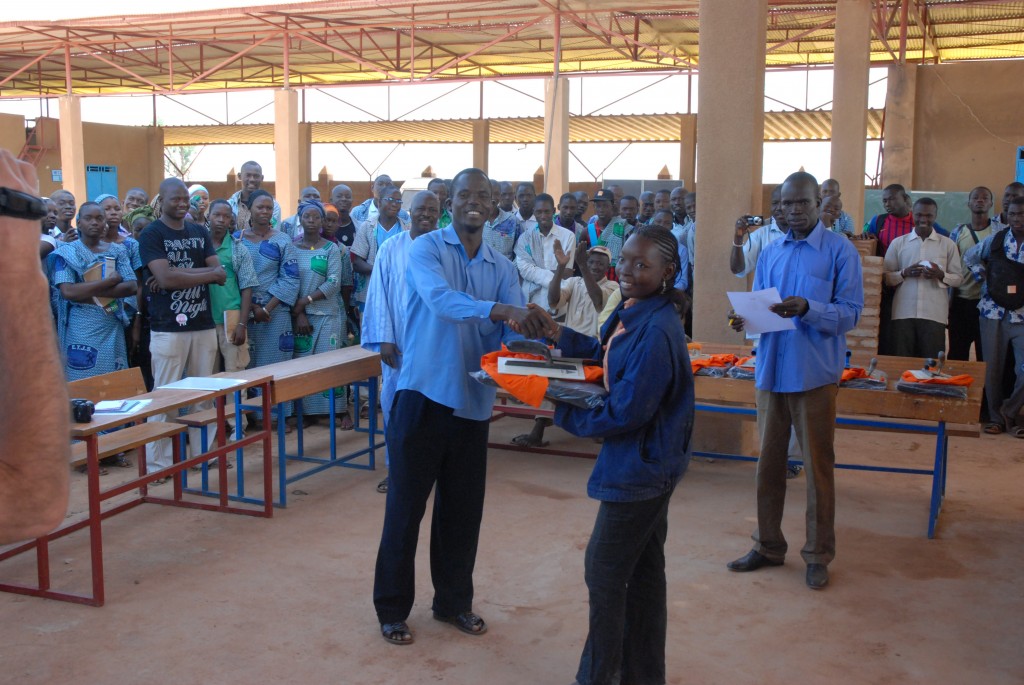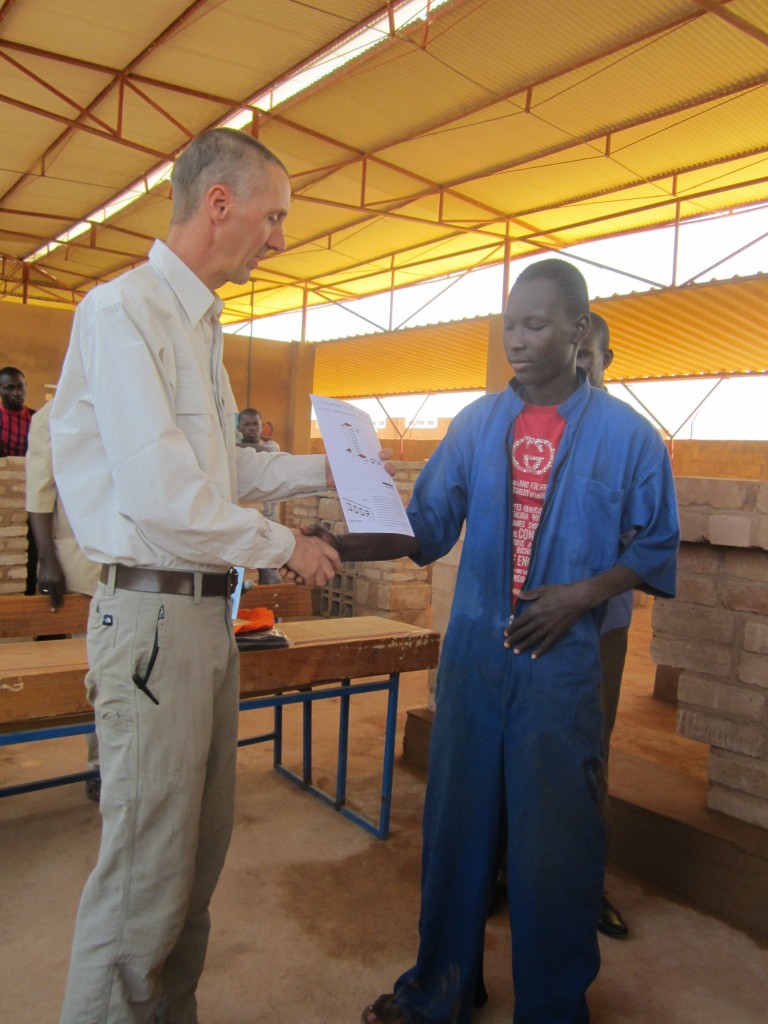The first presentation of the ‘Prix de Joop’ was a big feast. Wednesday afternoon 28 November 2012, twelve (12) fourth class students in masonry and bricklaying received their instructions. For the very first time these 8 men and 4 women are about to lay bricks with pressed earth stones. The masonry of these stones forms no part of the ‘curriculum’ of their education. During the competition however, all students will have an opportunity to show what they are up to. A big difference with the concrete stones they normally use for bricklaying is that these pressed earth stones have to be processed like ‘clean masonry’. The small walls will be judged according to their appearance, the height, the selection of stones, the finishing and the width of the joints, and, of course, whether they are “waterlevel”. Basil, head of the section and already from the very beginning involved in bricklaying education, is a patient and inspiring teacher.
Thursday, at 7.00 o’clock, we can really start after a small speech of the schooldirector after yet another encouraging statement of Basil. The foundation, the socle is made of concrete stones, based on which the elegant design of the ‘entrance’ will be constructed. The walls will be considerably smaller than we first thought, and also the idea that every student would make hsi of her own design was too difficult according to Basil. I am glad that he corrects me so directly and that he explains to me how the instruction will produce better results. Also his enthousiasm increases in the following days. At the beginning and at the end of the day I pay a visit to the school and I can see the progress made. Some students start with determination, but on the other hand are a bit careless.
Prix de Joop from stichting dogon onderwijs on Vimeo.
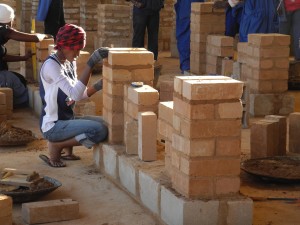 Other students, as if they were real artists, take regularly some distance from their work, have a look at it, and next still make some small adjustments to the ‘just laid bricks’. Bricklaying along a thread with positioning profiles is not yet feasible. Each stone is laid with the water-level. Saturday morning, one student is already completely done, while others are still taking care of the ultimate finishing touch, plastering with positioning profiles from the socle, and inspecting patiently once again the joints with pointing-trowel and brush.
Other students, as if they were real artists, take regularly some distance from their work, have a look at it, and next still make some small adjustments to the ‘just laid bricks’. Bricklaying along a thread with positioning profiles is not yet feasible. Each stone is laid with the water-level. Saturday morning, one student is already completely done, while others are still taking care of the ultimate finishing touch, plastering with positioning profiles from the socle, and inspecting patiently once again the joints with pointing-trowel and brush.
At 11 o’clock, I make a stroll with Idrissa, an architect in Mopti, and with Basil and Amatigue in order to make an appraisal of the constructed walls. About the number 1 we agree, without hesitation, very fastly. Really a very beautiful wall, where we have no comments at all. Judging the numbers 2 and 3 is far more difficult. Honestly speaking, we, and not least Basil, are all amazed about the high quality. It is clearly a small class with go-getters, whom we will surely be able to engage in our projects.
During the presentation of the prices, adapted on request of Basil, all students receive a reward; next to an amount of money, they receive a trowel, a metal skimmer and the necessary working clothing. In my speech I stress again the importance of their education and their work, and I emphasize that they should think themselves now about the future and about entrepreneurship.
C’était une grande fête pour participer à la distribution du premier ‘Prix de Joop’ . Le mercredi, le 28 novembre 2012, dans l’après midi, les 12 étudiant(e)s de la quatrième classe ont reçu leur commission. Pour la première fois, les 8 hommes et 4 femmes vont maçonner avec des pierres en terre comprimée. La maçonnerie des ces pierres ne fait pas part du ‘curriculum’ de leur formation. A cause de cette compétition, tous les étudiant(e)s ont la chance maintenant pour montrer ce qu’ils/elles peuvent. Une grande différence avec les pierres en béton qu’on utilise normalement dans l’éducation c’est qu’il faut qu’on les travaille comme ‘maçonnerie propre’.

